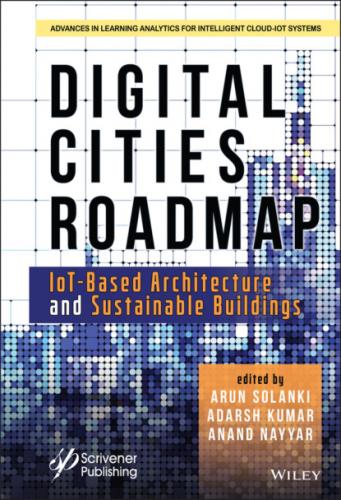Figure 1.15 (a) Improve resilience structure, (b) Reduce probability structural loss, (c) Increase resilience pre earthquake and (d) Improve the structural loss.
Third Dilemma
Various owners and stakeholders—with differing goals, interests and purpose—will simultaneously support resilience in the creation of a disaster-resilient society. Some research has been conducted on quantifying resiliency in network environments, such as road networks, electricity grids, delivery structures and the like. For a variety of factors, such networks are radically different from the group of buildings in a city [23, 24].
First, the network device properties are usually either held by an individual alone or by a group of several broad interdependent shareholders. The highways in one state, for example, are the responsibility of the State Transport Department, with a few exceptions.
Second, the architecture of such networks is often selfregulated such that the implementation committees for which even such owners are allowed to vote follow the design specifications of such facilities.
As a consequence of the first two points mentioned above, these owners are willing to step ahead and develop goals for their infrastructural durability. State Transport Ministers, for instance, took the initiative to define vital routes for the network to function during an earthquake which is usually referred to as roads and bridges on lifelines.
Figure 1.16Building damage by earthquake [55].
As seen in Figure 1.16, the building with a low-rise stage may have done well alone during the earthquakes but it was nevertheless demolished by the brick shower triggered by the out-of-plan collapse of an unreinforced maçonery wall in the neighboring house. Many well-performing buildings after the earthquake in Christchurch were still unavailable (and thus without functionality) because the owners were refused after the earthquake in the Christchurch Business District. For these reasons, genuinely resilient communities may be at risk for several decades.
Possible Solution to the Core Resilience Problem
There will also be a process to guarantee that stability becomes part of the negotiations in the construction of every building if durability is to be accomplished. Given the context of the unlikelihood of durability in architecture coding and requirements in the near future and the belief in constructing robust facilities continues to decline as time from past dangerous earthquakes decreases, it is not obvious what such a debate would achieve. It’s commendable that the US Resiliency Council (USRC) has suggested to implement Earthquake Building Rating System similar to the LEED Green Building Rating System, in which buildings voluntarily evaluated will receive a 1 to 5-star rating for their respective safety, damage (in terms of repair costs) and recovery measures.
1.8 Development of Risk Informed Criteria for Building Design Hurricane Resilient on Building
To maintain the best distribution of services in the city there is a de-aggregation method to maximize the efficiency of the buildings and building groups in order to meet the City output objectives. Degradation is the process through which the community’s performance objectives are converted into performance goals that are relevant for developing practice-based design criteria as described in the paragraph below. The tiered de-combination structure [69] as seen in Figure 1.17 will help to establish a connection between group priorities and PBE targets for specific buildings. The upper de-aggregation (ULD) can be formulated to define minimum output requirements as an inverse multinational optimization problem.
Inventories and service networks of growing group organization, when satisfied at the same time achieve the overall community resilience goals.
Figure 1.17 Framework of upper de-aggregation (ULD).
1.9 Resilient Infrastructures Against Earthquake and Tsunami Multi-Hazard
Hurricanes are one of America’s most expensive natural disaster [47]. Between 1970 and 2016, the U.S. sustained seven of the world’s 10 most expensive hurricane due to this the insurance company face huge losses for next five years.
In order to recognize the unavoidable interdependencies between vital infrastructure structures in the world, the quantification of vulnerability for populations prone to natural disasters (such as hurricanes) is important [70]. The vital infrastructure networks have effects on the environmental and economic stability of the nation because of their breakdown. Examples include communication networks, transport systems, water delivery schemes, etc. While interdependencies will boost the operating efficiencies of critical infrastructure networks, the network instability should be increased [68]. Such rise in device instability is triggered by cascade malfunction phenomena. Figure 1.18 provides an example of the interdependencies that typically occur inside a computational setting and thus involve modeling.
Figure 1.18 Framework of critical system modeling.
To measure the vulnerability of hurricane-prone communities where a computational simulator models each vital structure, for various types of hazards, similar diagrams can be drawn.
1.10 Machine Learning With Smart Building
While the word “Smart Building” (SB) may offer a focus on a futuristic intelligent space in science fiction films, the truth SBs still occur yet are its amount that. Standard buildings can be converted efficiently into SBs with limited infrastructural improvements due to recent developments in Machine intelligence (ML, large amounts of data Analysis, Items Network camera technology (IoT)) [51]. Smart workplaces, smart schools, intelligent residences, intelligent health facilities, intelligent hospitals and a broad range of other SBs provide digital systems that provide a vast assortment of value-added services, such as energy conservation, and often maintain occupant convenience, safety and protection.
1.10.1 Smart Building Appliances
SBs are also incorporated into a single framework, including a wide variety of programs and facilities including energy management systems, temperature controls, access protection systems, fire protection and defense, light and life regulation, telephone infrastructure, bureau automation, computer networks, region position systems, LANs, informatic management. The SB devices, including air temperatures, lighting systems, solar panels, energy storage systems, temperature sensors, power sensors and tracking cameras, will be shown in Figure 1.19.
Central management of these components, for example, will facilitate efficient energy consumption by smart monitoring of the air-conditioners and lights and good management of various sources of green and brown electricity. In most instances, SB requires a Controller Area Network (CAN) connection to Ethernet backend.
1.10.2 Intelligent Tools, Cameras and Electronic Controls in a Connected House (SRB)
Compared with commercial
